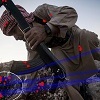MULTIMEDIA FORENSICS AND SECURITY
Multimedia forensics aims to introduce novel methodologies to support clue analysis and to provide an aid for making a decision about a crime by looking at a multimedia content as a digital clue (image and video). Multimedia forensics deals with developing technological instruments operating in the absence of signatures or watermarks inserted in the image. These techniques basically allow the user to determine if a particular content has been tampered with or which was the acquisition device used.
The basic idea behind multimedia forensics relies on the observation that both the acquisition process and any post-processing operation leave a distinctive imprint on the data, as a sort of digital fingerprint. The analysis of such a fingerprint may permit to determine image/video origin and to establish digital content authenticity.
The ICL lab carries on research activity in this scientific field in collaboration with many Italian and international Universities. In particular, the ICL Lab directly cooperates with the Scientific and Technological Department of the Italian Prime Minister .
You can find the complete list of our publications in the Publications page.







